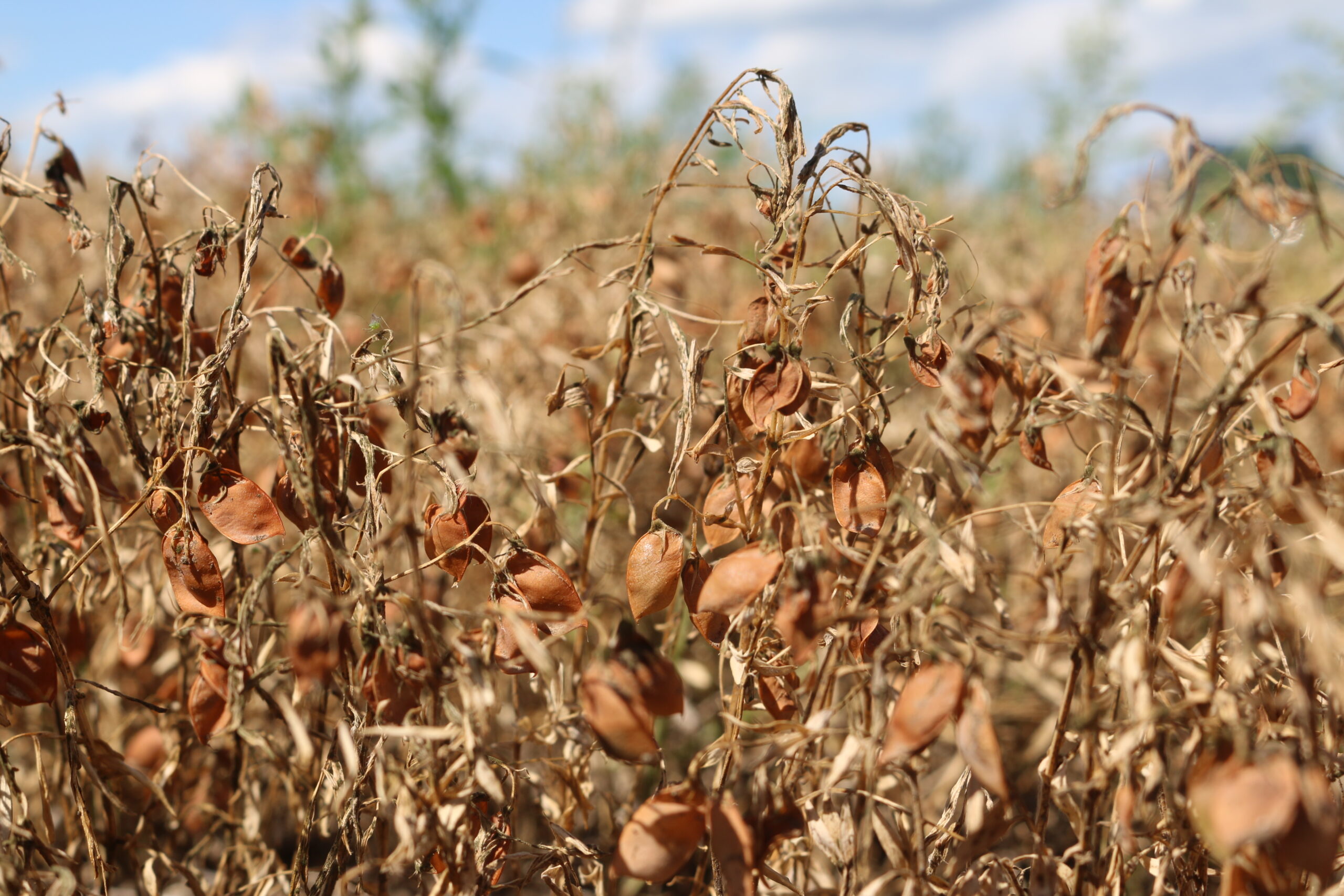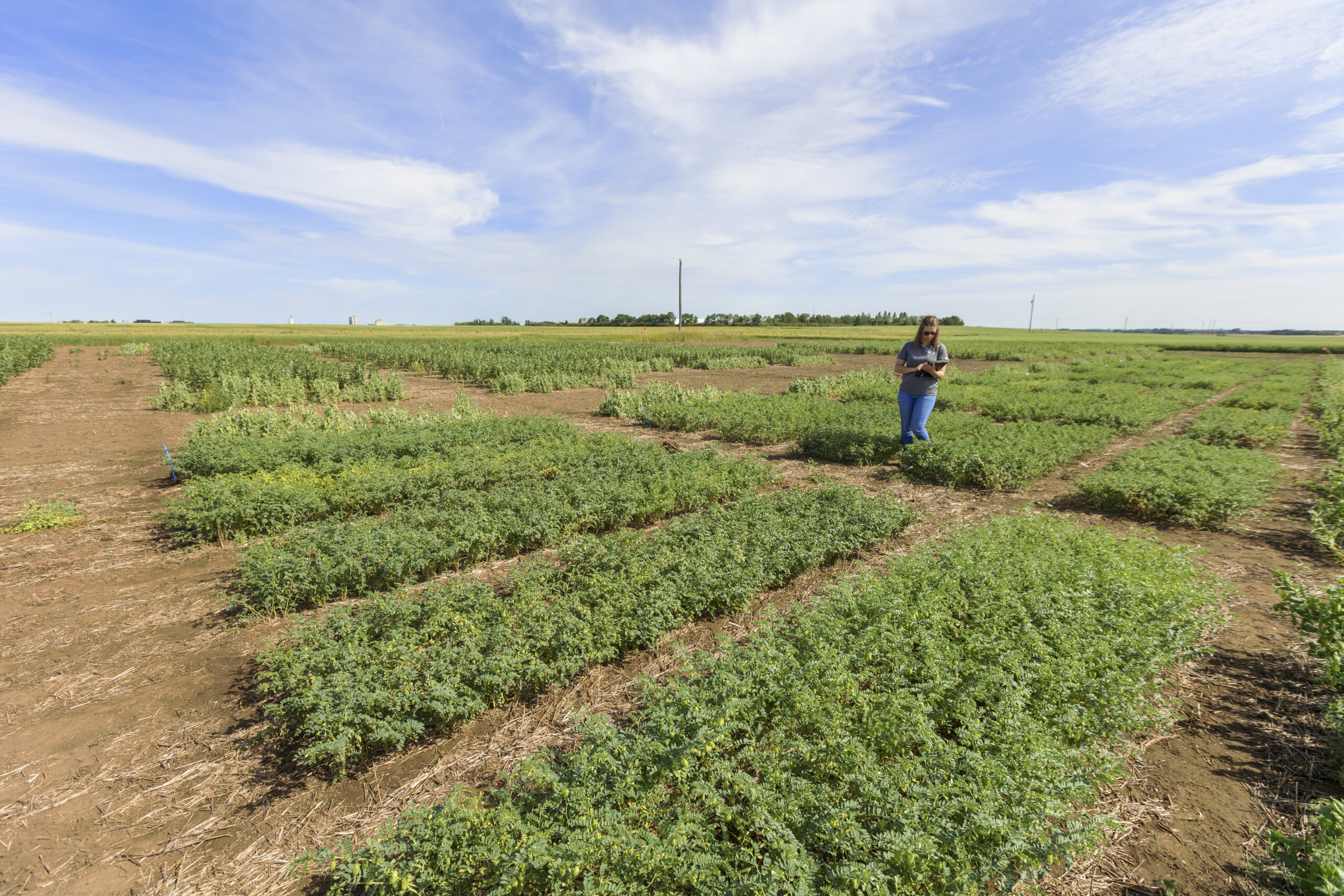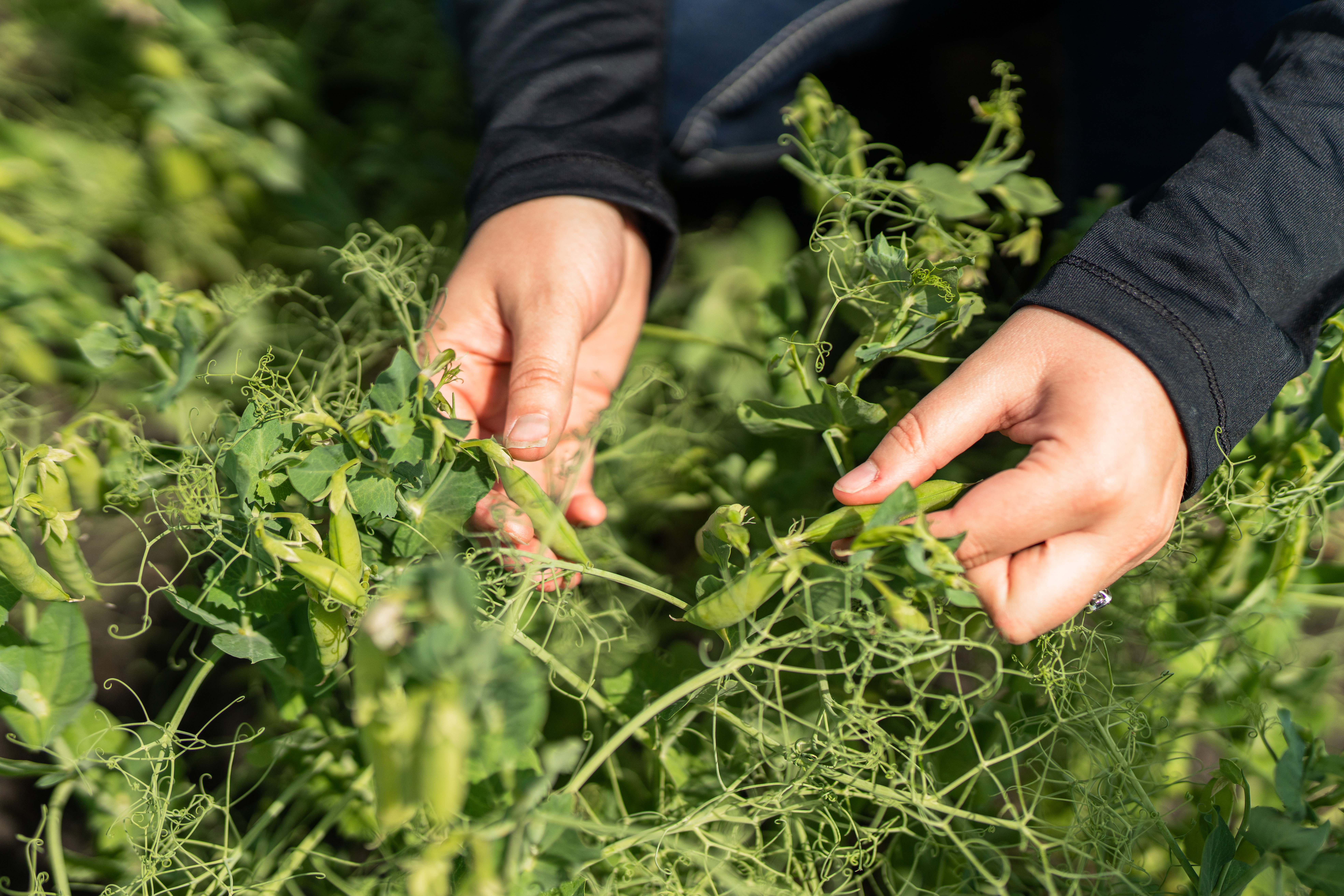By Bruce Barker, P.Ag.
Growers contemplating lentil production have two major considerations when it comes to deciding what variety to grow. Knowing what market class of lentils is suitable for their area, and the ability to produce the desired quality for the target market is the first step. The next step is choosing a variety within the selected market class, based on a number of agronomic considerations such as days to maturity, disease resistance, herbicide options, and yield potential.
Lentil classes vary by cotyledon color, seed size, and seed coat colour. Markets have preferences for specific lentil classes and knowing what market you want to target is the first step but should be coupled with the ability to grow that lentil class successfully.
Lentil classes can differ in their production requirements making them more suited to certain management systems as well as soil and climatic zones. Making sure the crop will have a good chance to reach maturity with desired quality is important especially when smaller niche markets are targeted.
Lentil varieties produce seeds ranging from size small, ranging from 34-45 grams (g) per 1,000 seeds (g/1,000 seeds), to large, which average over 60 g/1,000 seeds. Extra small green lentil varieties such as CDC Asterix are particularly small at only 25 g/1,000 seeds, while extra small reds are typically 30 g/1,000 seeds.
Seed coat colours range from clear to green, tan, brown, grey, blotched green and black, or black. Cotyledons may be yellow, red, or green, with various combinations of seed coat and cotyledon colours determining specific market classes.
Green Lentils
Varieties typically have yellow cotyledons with green seed coats and seed size is described as large, medium, small, and extra small. About 75% of the green lentils grown in Saskatchewan are large-seeded and about 25% are classified as small greens. Small greens are sometimes referred to as Eston-type and the large greens referred to as Laird-type, which are designations that are derived from the earliest lentil varieties grown in Saskatchewan.
Green lentils are consumed as whole seed. Most large green varieties require early seeding because of their relatively late maturing, indeterminate growth habit. The tall stature of these varieties can make them prone to lodging, and susceptible to Botrytis (grey mould) and Sclerotinia (white mould) infection in high moisture conditions.
Red Lentils
Varieties typically have red cotyledons with grey seed coats. Approximately 90 – 95% of red lentils are dehulled and marketed as footballs or splits. They are most commonly eaten as soup in the Mediterranean region or as dhal – a thick sauce in which spices are used as flavouring in south Asia. It is an important source of dietary protein and carbohydrates.
Red lentils are divided into large, small, and extra small market classes. Small red varieties tend to be earlier maturing and shorter than the large green varieties.
Red lentil varieties have red cotyledons and typically have grey seed coats, however they can have brown, tan, or pale green seed coats. Seed coat colour has some influence on red lentil quality, particularly the ability to withstand weathering in years with prolonged periods of wet weather at maturity. Under those conditions, varieties with grey seed coats show less weathering damage.
Specialty Market Classes
These varieties are grown throughout Saskatchewan in small volumes.
Black: Black lentils (Indianhead variety) were originally intended for use as a green manure or plow down crop, but have been marketed more recently as whole seeds which are often referred to as Beluga, or black lentils. They hold their shape well and cook quickly with a rich and earthy flavour.
French Green: These lentils have a green marbled seed coat with yellow cotyledons, small seed size similar to small red lentils, and retain their shape better than small reds or greens when cooking. French green lentils are cooked whole and are known for their distinct nutty and peppery flavour, darker colour, and smaller size compared to small green lentils
Spanish Brown: These lentils have a grey/brown dotted seed coat with yellow cotyledons and small seed size most similar to small reds. They are sold primarily into Spain. These lentils are marketed by Simpson Seeds. Spanish brown lentils hold their shape well when cooked and have a mild, earthy flavour.
Green Cotyledon: These lentils have a green or marbled seed coat with green cotyledons and a small-to-medium seed size. The unique green cotyledon colour can be attractive resulting in possible premium pricing opportunities. They are marketed by AGT Food & Ingredients as Queen Green lentils.
Large Red: Large red lentils are approximately 30% larger than traditional red lentils. They are marketed as split and football processed products. They have a niche market appeal with potential for high demand and profitability. Current varieties have been marketed as King Red by AGT Food & Ingredients.
Variety Selection
Once a lentil class is chosen then variety choice becomes the next step. Use market preferences and varietal performance data to help inform your decision.
Market: Identify your target market and make sure the variety selected matches the specifications and quality expected by your buyers, such as seed size, colour, functionality, and other attributes.
For special market classes, talk to the grain buyer to understand the size of the market, contract terms, and market options if the lentils do not meet quality standards.
Maturity: Identify realistic expectations on the maturity needed to achieve optimum yield and quality in your region. Early maturity is rated as 100 days, very late is rated at 110 days based on a May 1 seeding date. Making sure the variety of choice has a good chance of reaching maturity is important for not only yields but quality as well. Later maturing varieties tend to have higher yield potential but will only reach that extra potential if the growing season allows.
Maturity can also influence harvest management and harvest timing. Choosing varieties that mature earlier may mean better conditions for harvest management strategies for your operation such as desiccation or swathing. Timing of harvest can also be influenced by maturity. Consider maturity when selecting varieties as it can influence harvest management as well as quality attributes.
Disease Resistance: Select varieties with better disease resistance for high risk areas or fields. Resistance is a tool that helps with disease management, but may or may not reduce the reliance on fungicide application. Ascochyta resistance rated as ‘good’ is still only considered intermediate resistance, and Anthracnose resistance is only to Race 1. Integrated disease management practices are still important, as the varieties can still be infected with the diseases.
Root and seed rots are often complexes of more than one pathogen such as Fusarium, Rhizoctonia, Pythium, and Aphanomyces. Tannins in the seed coat have been found to increase tolerance to seed and seedling diseases. Currently all varieties of lentil are susceptible to Aphanomyces euteiches but there are some differences in susceptibility to Fusarium avenaceum.
Herbicide Tolerance: Consider the weeds or volunteers that may be present in the field to determine if an herbicide tolerant variety is a good choice. Varieties with the Clearfield® trait (designated by the “CL” in the Varieties of Grain Crops performance tables) have tolerance to imidazolinone herbicides, such as Odyssey®, Odyssey DLX®, and Solo®. If these herbicides are applied to conventional lentils they will cause crop injury.
Herbicide tolerance under weed-free conditions is often linked to a yield penalty. However, the newer CL varieties have improved yield potential making variety choice very important if selecting for this trait. Under weedy conditions the ability to use these Group 2 Clearfield® herbicides reduces competition with weeds and increases yield. The level of Group 2 herbicide resistance in the weed populations should be considered when choosing whether an herbicide tolerant system would be of benefit to your farm.
Seed Size: If seed size does not affect the market choice, then consider the seeding costs of the variety. Smaller seeded varieties are usually cheaper to seed and have fewer production issues with plugging seeding equipment and other operations.
Seed Colour: Large green lentils are downgraded if they lose colour or fade at harvest, therefore timely harvest is key to reduce colour loss. Red lentil colour is less affected by exposure to sunlight and may be a better choice if you anticipate late seeding, or if it is a challenge to harvest lentils at the optimal time.
Crop Growth Habit and Other Physiological Factors: Factors such as growth habit (determinate or indeterminate), plant height, and standability can affect the biomass produced as well as harvest management. The more indeterminate the type or variety the harder it is for the plant to switch from vegetative production (biomass) to reproductive phase (seed production), and stress is often important to induce the switch. Small red lentils are more determinate types while large green lentils are more indeterminate.
With more vegetative material or biomass due to more indeterminate habit or as a result of higher biomass/taller plant height selecting varieties with higher disease resistance and preparing for more intensive disease management will be important. Plant height can influence biomass production but also affect pod clearance which can affect harvest management. Maturity can also be stretched out with more indeterminate varieties which make harvest management a greater challenge.
Yield: This is often the highest priority as it directly relates to the ultimate goal of net returns. However, other performance improvements such as maturity and disease resistance or quality attributes may be just as important for achieving that goal. In some cases the advantages and higher performance of new varieties may not necessarily translate into higher yields as a result of environment or management practice. If all other factors have been considered then use yield potential as the deciding factor.
Where to Find Information
Variety information for all market classes of lentils is available from several sources. The Government of Saskatchewan’s Varieties of Grain Crops, which is included in the Saskatchewan Seed Growers Association’s SaskSeed Guide, is published each winter and has performance and management information, agronomic ratings, and long-term yields on each variety. Individual year or site data for regional variety trials are also available at saskpulse.com.
Saskatchewan Crop Insurance Corporation has Sask Management Plus (SMP) that provides access to farmer crop production information, to help make more informed farm management decisions. SMP can provide acres and yields of varieties by Risk Zone as well as provincial averages. This information can be done interactively by crop to access more detailed information, and can supplement regional variety trial information to see how a variety of interest performed in a select area.
Distributors of Lentil Varieties in Saskatchewan
The main breeding institution for lentil varieties available in Saskatchewan is the Crop Development Centre (CDC) at the University of Saskatchewan. In the province of Saskatchewan, Saskatchewan Pulse Growers (SPG) has the distribution rights to all lentil varieties and classes developed at the CDC since 1997. The new varieties are made available to Select Seed Growers in Saskatchewan who then multiply the seed for distribution and sale to commercial farmers.
With specialty varieties or classes where the market may need development, or to handle distribution outside of Saskatchewan, SPG tenders specific varieties. In Saskatchewan the main distributors of lentil varieties are listed below and more information on individual varieties may be available on their website:
- SeCan – CDC Richlea
- AGT Food & Ingredients – Queen Green Lentils and King Red Lentils
- Simpson Seeds – Spanish Brown Lentils
Finding Seed
Seed can be found through several on-line resources:
- Saskatchewan Pulse Growers Select Seed Grower Directory
- Canadian Seed Growers Association (CSGA)
- The CSGA maintains an online seed directory to help seed buyers find seed supplies. Go to seedlocator.net to find Canadian pedigreed seed for sale.
- Sask Seed Guide published by the Saskatchewan Seed Growers Association
Buyers
Listing of grain buyers can be found with several online resources:
- Saskatchewan Pulse Growers Buyer/Seller Listing
- Canadian Special Crops Association
- Canadian Grain Commission Licensed Grain Companies
Published February 2020



